Thank you for participating in this week long glimpse into the world of Snakes of Southern Africa. Each of the following sections, represent a summary of the week long social media discussion.
Each day sparks a conversation. Each section contains links that will help you explore the day's topic and your relationship with the environment, just a bit little deeper.
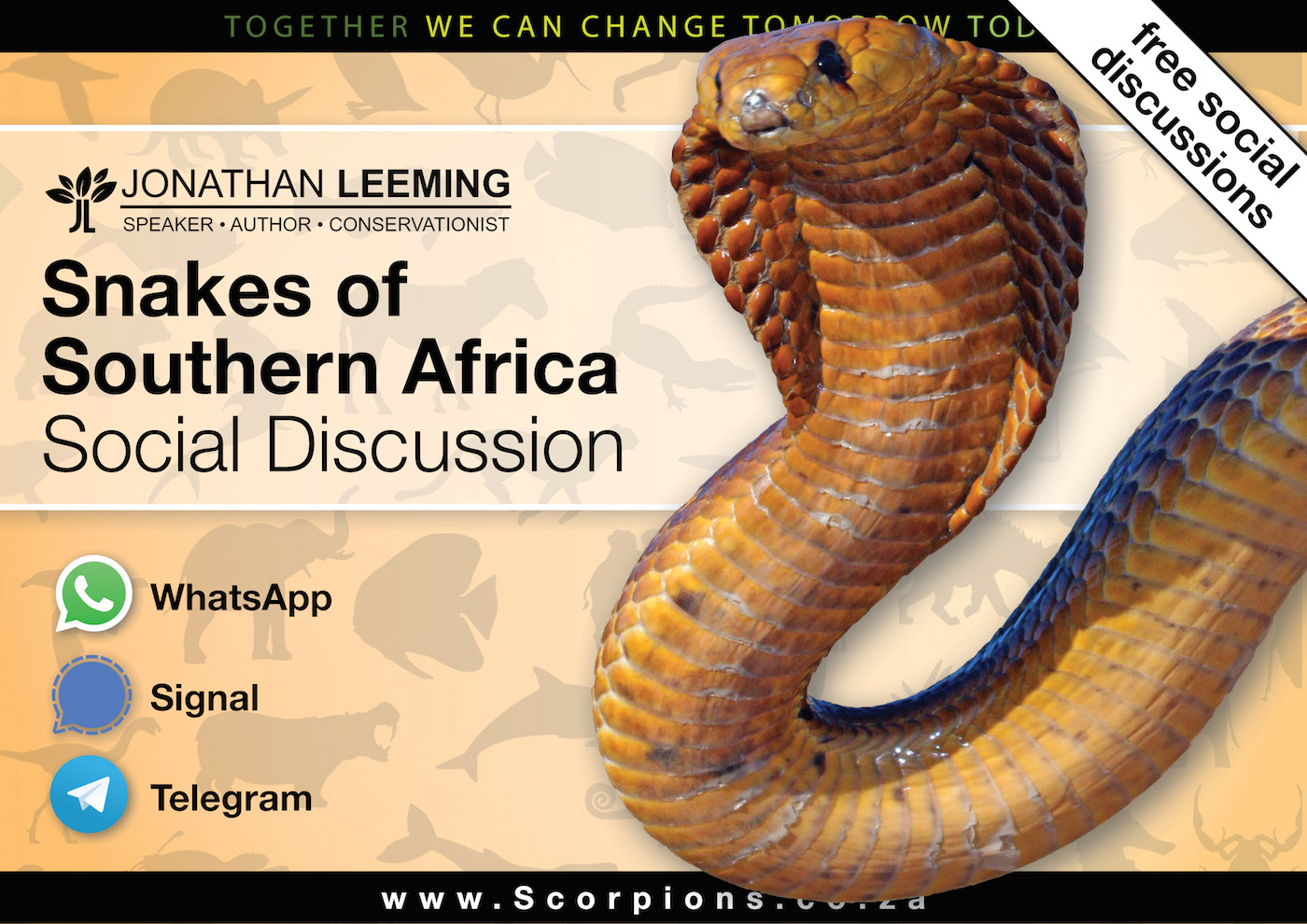
Southern Africa is blessed with about 172 species of snake, occurring in almost every habitat including the sea. Accurate identification of snakes can be difficult, especially when they are moving away or are partially out of sight. There is no golden rule or characteristic which can be used to identify medically important species. When encountering a snake, take note of the following:
In many areas of southern Africa, there will be a few commonly encountered snakes that can easily be identified. With time and practice, you can easily become familiar with these snakes. It is recommended that you visit your local reptile park, attend a course with a reputable training provider or attend a snake demonstration in your area.
If you enjoyed this section then you will love my Snakes of Southern Africa Natural History Presentation.
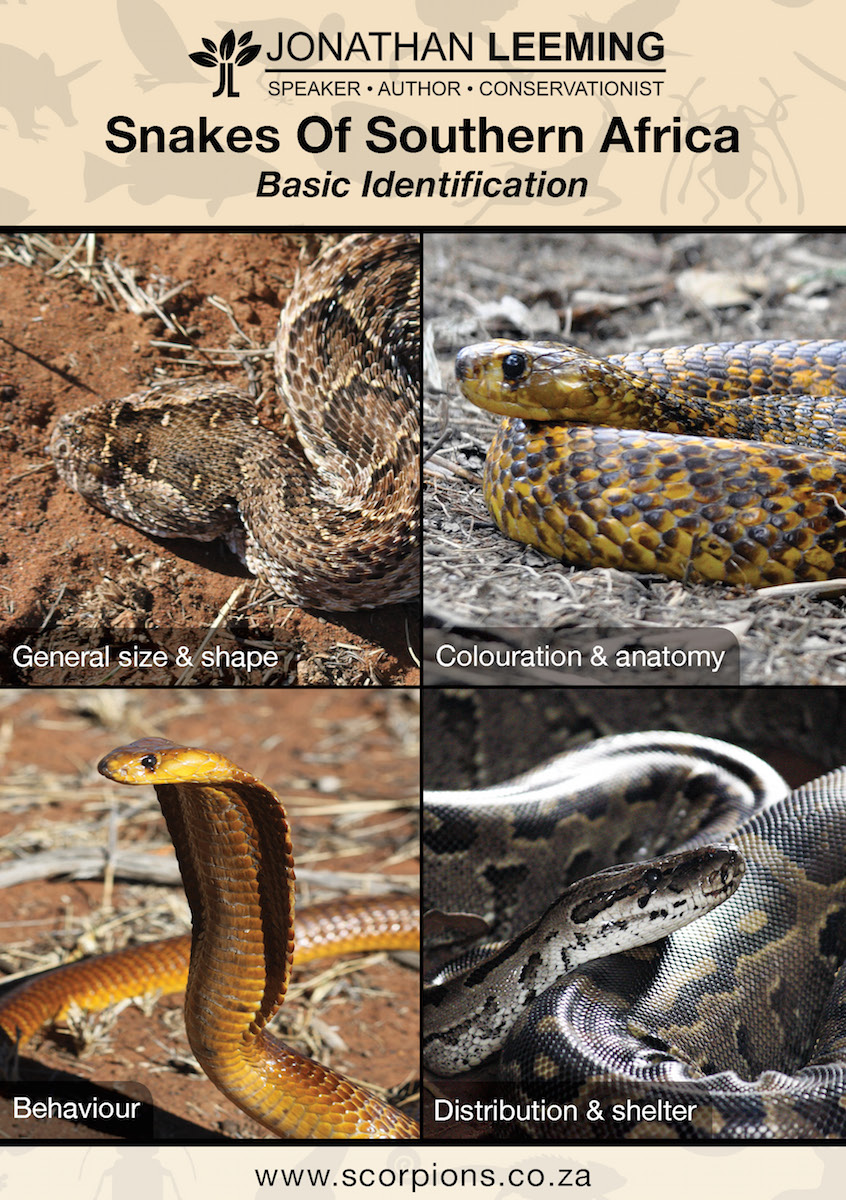
Of all the animals on Earth, snakes are the most steeped in folklore and religious mythology. Cheesy B grade movies and second rate social media clickbait, feed the collective mindset a diet of ignorance and fear, creating a dangerous perception that snakes are a negative aspect of the world, a creature we should be afraid of.
I find it fascinating how two people can have completely different perceptions towards exactly the same thing. Some people are afraid of snakes, while others understand and respect them. It is interesting to note that those people who have the most to say regarding the dangers that a snake poses, are the same people who know the least about them.
When we look at snakes through knowledge and understanding, we see an animal that does everything that it can to avoid human conflict and interaction. When a snake encounters a human, they hiss, spread a hood, remain still, or try to get away as fast as they can. They only use venom as a last resort.
There is no doubt that snake bite is the most impactful of all types of envenomation in southern Africa and many other areas of the world. However, I don’t believe we should be afraid of a snake, but rather we should learn to be more respectful and tolerant. If we allow misinformation and pious rhetoric to infect our values and beliefs then we create a false narrative of the world that does us no service. When we look at the hard facts and realize that your packet of cigarettes, bottle of whisky and the car you drive pose a far greater threat than any snake, then we realise how we have misinterpreted these animals.
If you enjoyed this section then you will love my Creepy Crawly Walk, my Bite Me! Presentation and my Free Bite Me! Online Workshop Tool.
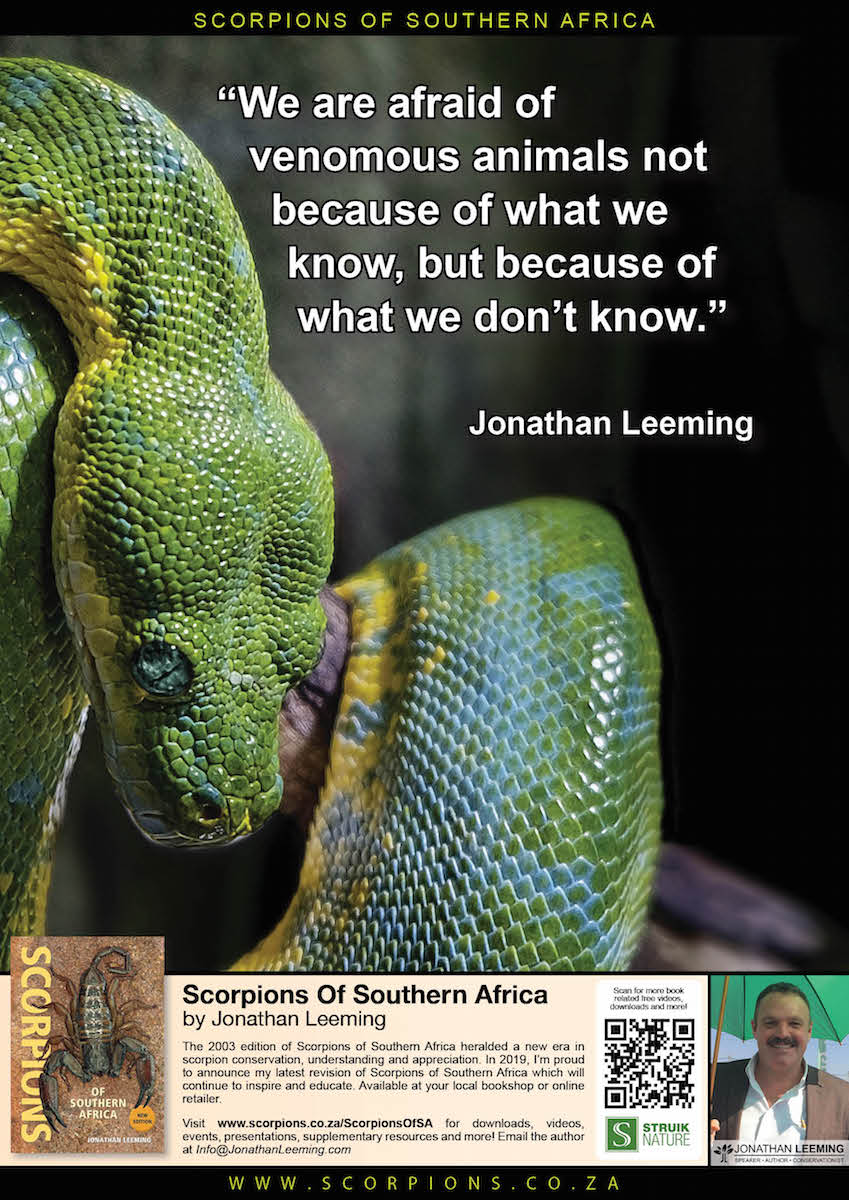
One of the flaws of the human mind is how our values and beliefs can twist our perception of reality to such a degree that we become a danger to ourselves and the world. Given the misinformation and folklore surrounding snakes, I can appreciate how difficult it is for many people to understand the value that a snake offers to humanity.
Snakes occupy a key position within the environment, that provide an indirect benefit to us, by supporting the ecosystems that we rely upon for our very existence. Because of our general disconnection from the natural world, this indirect value is not often thought of or even recognised.
The direct value of snakes, saves or improves the life of over 1 billion people worldwide, especially those living in developed countries. Snakes and their venom have unlocked treatments for heart failure, kidney disease, arthritis, diabetes, preventing stroke and blood clots. If you, or any of your family is taking medication to treat high blood pressure, there is a very good chance that it is based upon an angiotensin converting enzyme (ACE) inhibitor, which was derived from the venom of the Arrow-head Pit Viper.
If you still do not understand the value of snakes, it is not because they offer no value. It is because your values and beliefs have created an alternate reality in which they have no value.
How you think, matters in today’s world. It matters because it’s only by changing our values and beliefs to reflect the realities of our time, can we achieve a more honest and accurate way in which we see the world, and find solutions to the challenges of our time.
If you enjoyed this section then you will love my Creepy Crawly Walk my Biomimicry Walk, Deadly Innovation Presentation. and Biomimicry Walk.
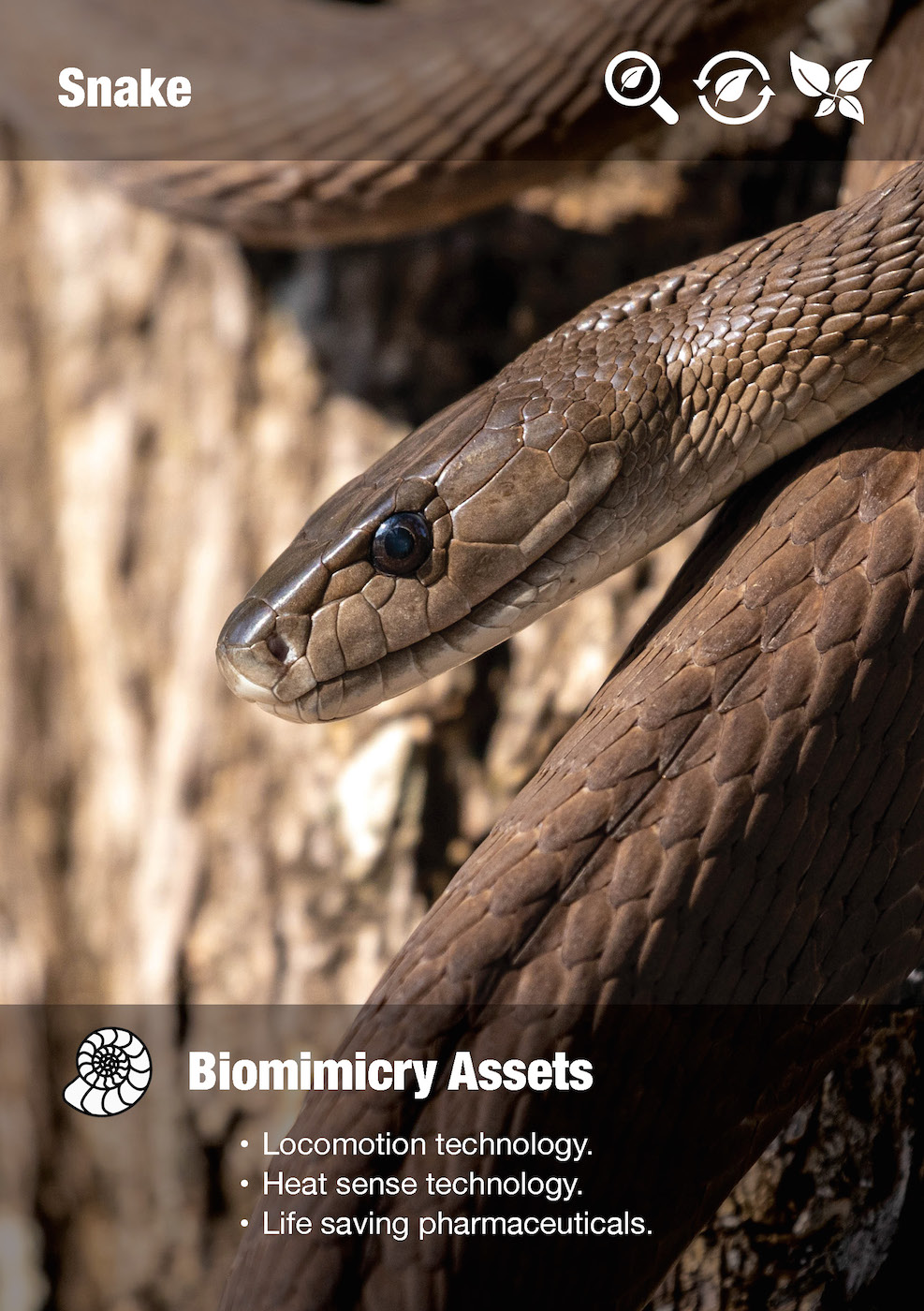
According to the WWF’s living planet report of 2020, human activities and influence upon populations of mammals, birds, fish, amphibians and reptiles have decreased on average by 68% since 1970. Today has never been a more important period in human history when we need to actively protect the environment.
There are 3 layers of legislation aimed at protecting South African snake populations from decline.
Why the need for legislative protection? Poaching for the pet trade and habitat destruction exerts a huge negative influence upon animal and plant populations. If you are the organiser of a snake demonstration on your premises, ensure that the snake handler has all of the necessary permits for all indigenous snakes.
Conservation efforts to protect snakes include habitat conservation, having your say in development applications (habitat destruction), not falling foul of ignorance and killing snakes intentionally, avoiding the use of insecticides and rodenticides, keep domestic cats indoors at all times, do not buy wild animals or support the pet trade, be mindful when driving a car, if you see anyone collecting snakes (or other animals and plants), immediately report them to the local authorities. These conservation efforts not only assist snakes but also other animals and plants.
If you enjoyed this section then you will love my Conservation Leadership Presentation.
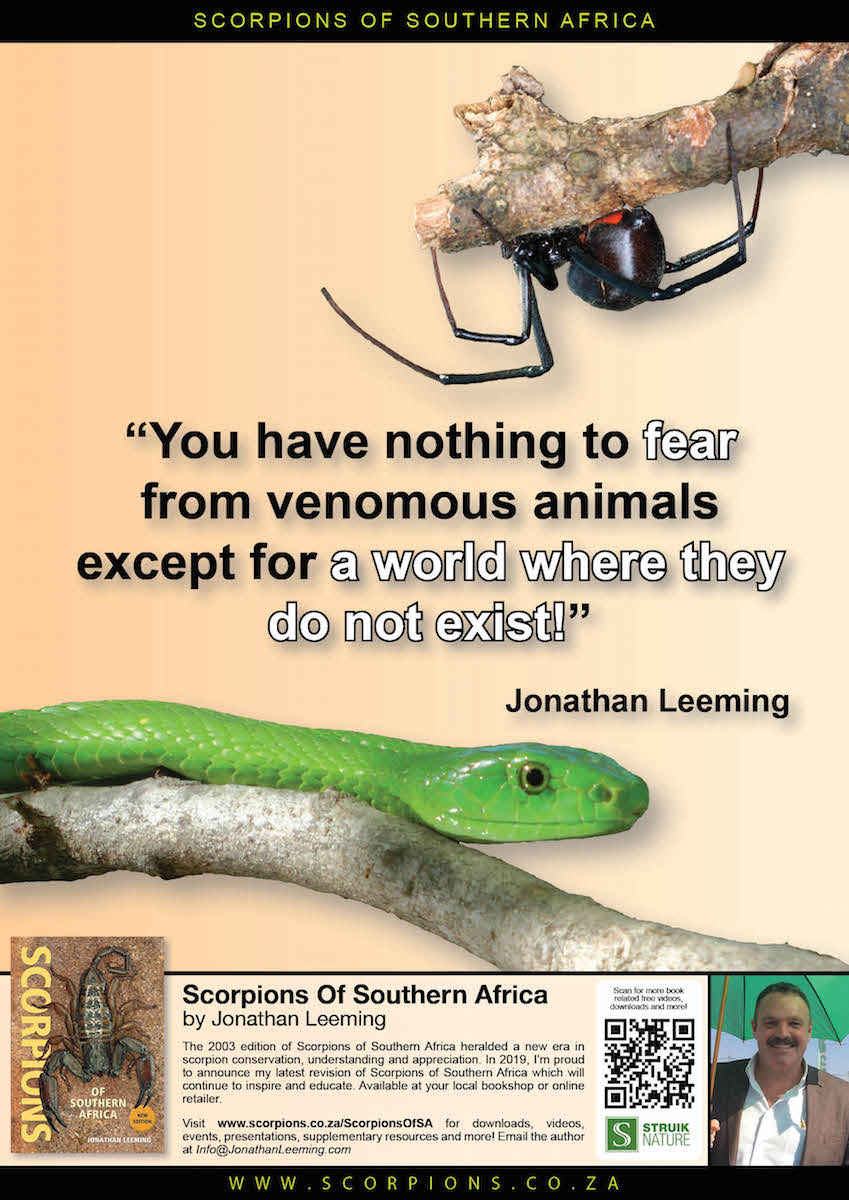
Venom has evolved as a chemical weapon that is specifically designed against biological processes, driven according to the relationship between predator and prey. For the purpose of snakebite first aid, venoms have been divided into 3 groups: Neurotoxic, Cytotoxic and Haemotoxic. These groups however, only indicate where the symptoms are and not what the symptoms will be. However, understanding what snakes use their venom for, offers greater insight and understanding into its affects upon the human physiology.
It is by no chance, that many of southern Africa’s medically significant snakes, prey upon mammalian prey such as rats and mice. By design, we share the same physiology as these prey items, and experience the same catastrophic system failures when these venoms are introduced to our physiology.
If you enjoyed this section then you will love my Essential Snake Bite First Response Seminar.
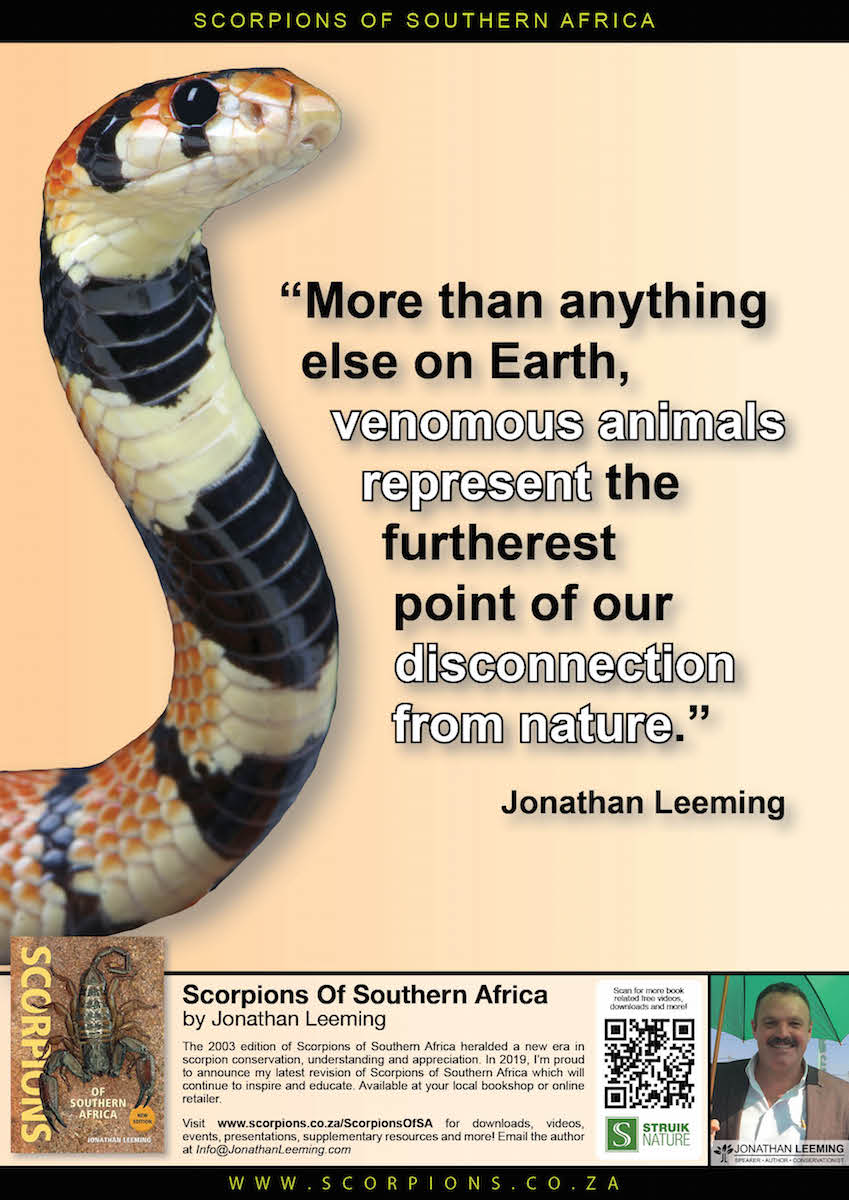
There are many conservation efforts in your area that not only conserve scorpions, but all aspects of our local environment. Conservation takes doing, if you want to assist in conserving where you live, then please consider getting involved with one of the many projects, or begin at home or your garden.
If you found the content of interest, they you will love my latest, award winning book entitled One World. Since you are in the area, For R280, a cup of coffee and 15 minutes of your time, I'd be happy to drop off a signed copy or two. Maybe you would prefer getting out and about. Join me on one of my events at Kloofendal Nature Reserve. Simply fill out the form below and I will get back to you ASAP!
Lastly, if you can use some educational material then go to www.Scorpions.co.za and www.Jonathanleeming.com for free online educational resources (posters, workshop tools, social media memes) and articles.
Jonathan Leeming


